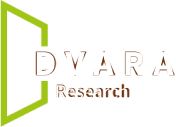NBFCs’ collection efficiency takes a hit post demonetisation
Non-banking finance companies (NBFCs) represent an important linkage between the formal banking sector and informal segments of the real economy in India
Comments to the report of the “Committee to review the framework related to Digital Payments” dated 09 December 2016 (Committee), constituted by the Ministry of Finance, Government of India (Report)
The Future of Finance Initiative (FFI) is housed within the IFMR Finance Foundation (IFF) and aims to promote policy and regulatory strategies
that protect citizens accessing finance given the sweeping changes that are reshaping retail financial services in India.
Comments on the Report of Watal Committee on Digital Payments
Shortly after Christmas last month, a press release from the Ministry of Finance on 28th December announced that the Committee on Digital Payments (chaired by Ratan P. Watal) had submitted its Report.
Agricultural Markets: Five Opportunities for Innovation After Demonetisation
Due to the demonetisation of currency and recall of the currency notes of Rs. 500 and Rs. 1000 denominations announced by the government there was some panic in the initial days and the mandis were closed for some days.
In the Eye of a Cyclone
Even as the city of Chennai was grappling with the after-effects of the devastating floods of December 2015, exactly a year later, Cyclone Vardah unleashed its fury, leaving behind a trail of destruction and devastation.
Top 5 Game changers for the Indian Financial System in 2016
As the year comes to a close, we put together the top 5 developments that we believe have shaped the Indian financial system in 2016.
Replug – Interview with Dr. Viral Acharya
The Government today appointed Dr. Viral Acharya, Professor of Economics at the New York University Stern School of Business, as RBI Deputy Governor for 3 years.
Determining Optimal Credit Allocation at a District Level
In this paper, we attempt to develop a granular understanding of the relationship between
credit (as measured by total bank credit outstanding in a district) and economic growth (as
measured by Gross District Domestic Product) for 32 districts of Tamil Nadu
Electronic Financial Data and Privacy in India
Earlier this week, the Secretary for the Ministry of Electronics and Information Technology (MeitY) confirmed that MeitY is set to review the legal framework for digital payments and cybersecurity
When Is Microcredit Unsuitable? – Guidelines using primary evidence from low-income households in India
Rapid expansion in the microfinance sector has been credited with advancing financial inclusion in India, even as much of this growth has focused exclusively on simple group loans and credit-linked insurance.

